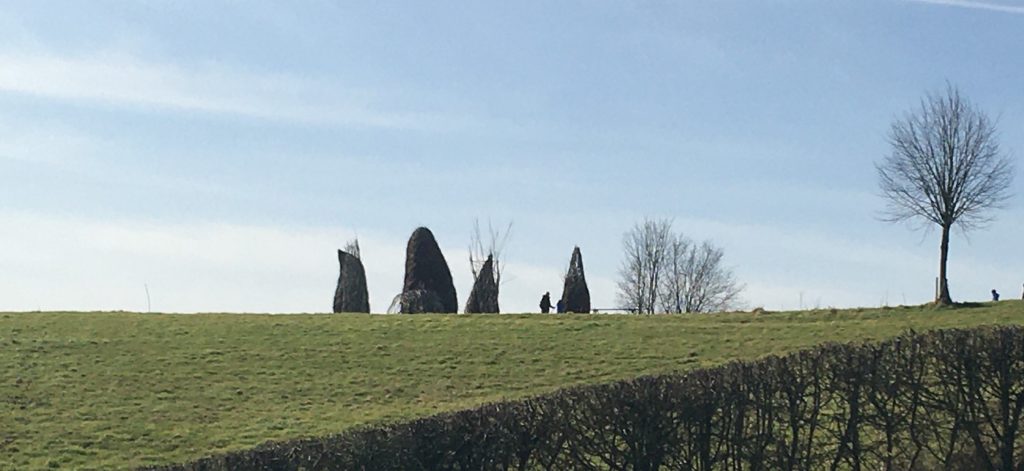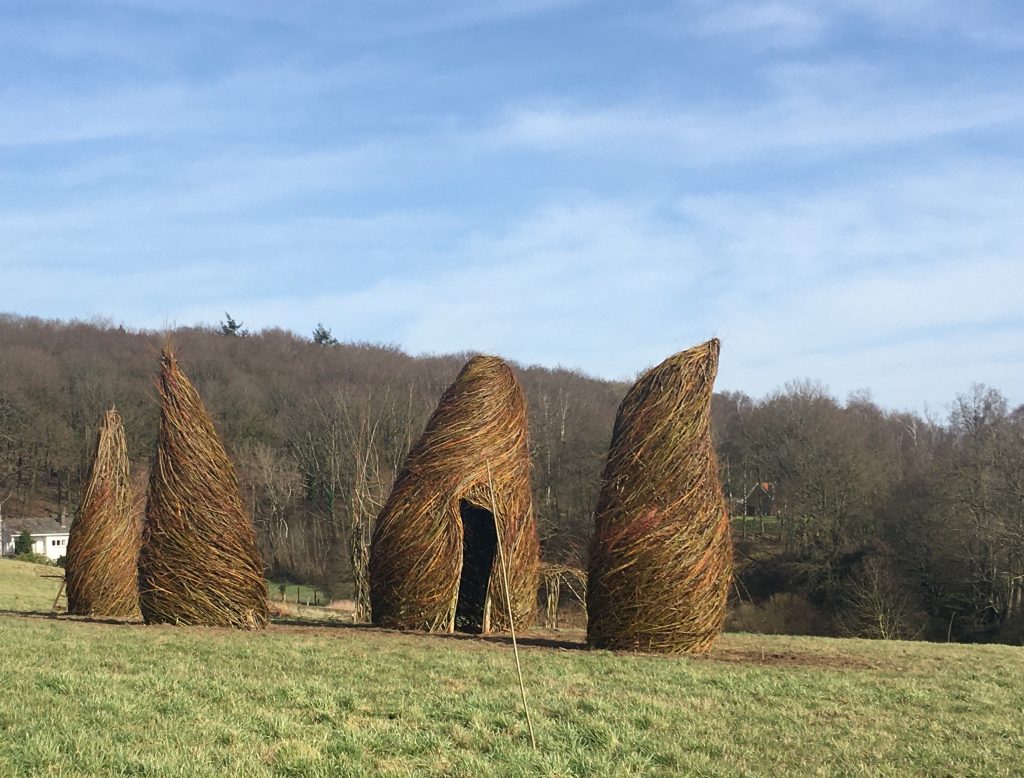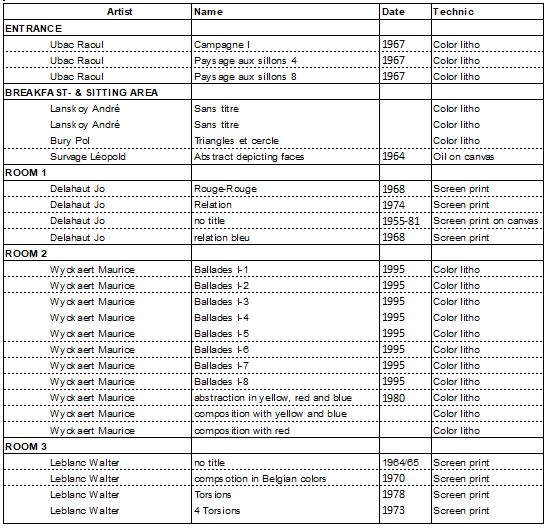About our history
About the history
You are not the first guest, the flanks of the Kemmelberg have always been a busy place.
The name Kemmel is said to be of pre-Roman origin and refers to the existence of a cult site dedicated to the Celtic war god Camulos.
There are sufficient indications that the Kemmelberg was a center of power in the Iron Age, inhabited by local Celtic aristocracy during the late Hallstatt period (800 to 500 BC) and especially early La Tène period (450 to 100 BC). The presence of ferruginous sandstone on the Kemmelberg may have caused local iron extraction.
In 2021, there was a temporary land art installation ‘The Ancesters’, just north of De Kleine Mote, to make that historical presence tangible.


The farmstead De Kleine Mote already existed before 1800. Originally the buildings were slightly higher on the ridge, as visible on the Ferraris map of 1771.

Everything was destroyed during WWI. The farm with the bakehouse were reconstructed lower (more to the south), at the current location. The pigsty (now B&B) and barn were later additions.
The last farmer on De Kleine Mote was a bachelor. When he retired in 1999, there was no successor and no buyer, the farm was simply too small to be economically viable.
For decades, not a penny had been invested in the buildings. Farmhouse, stable, barn… everything was worn out. But it was a wonderful location and grandpa – in love with the region where he was born and raised and always lived and worked – could not resist the temptation to acquire it. We inherited the dilapidated farm. A wonderful gift. It brought us back to our roots and now the (grand) children can enjoy the unique beauty of this region.
As our son is an architect-engineer, the renovation became a real family project. All volumes were rebuilt from 2011 on to meet current standards of quality, insulation and ventilation.
About the works of art on display
In the B&B the following works of art are on display:

https://abstractmodernisme.vlaamsekunstcollectie.be/en/artist/jo-delahaut
About our commitment to ecology
The site is Almost Energy Neutral.
The main house is passive certified and the B&B has a low E-level (E35): no windows in the north façade, excellent insulation, good airtightness and solar panels.
Highly efficient gas boiler that is maintained regularly, individual room radiator thermostatic valves.
LED and energy saving light bulbs.
This means very little energy consumption and very little CO2 emissions.
Ventilation
For the B&B we opted for the C + system which checks the air quality 24 hours per day for CO2 or moisture and/or VOCs (aroma) per area. The ventilation level per area is controlled completely automatic to measure the air quality (based on sensors in the regulating modules). As long as the air quality in an area is good, the ventilation level is not increased. This ensures maximum comfort and maximum energy saving. A solid system for discharging polluted indoor air while the window vents bring, in a natural way, fresh air into the living room and bedroom.
Construction materials
Both the main house and the B&B are wood frame construction, insulated with cellulose flakes and airtight placement of windows and doors.
Rainwater
All rainwater is collected and filtered:
- Pre-filtering by self-cleaning cyclone filter;
- Post-filtering by (i) mechanical filter that blocks dust particles (20 microns), (ii) active carbon filter that absorbs odors, colors and flavors and (iii) UV filter that makes the water germ-free.
In B&B we have chosen to use the rain water only for the toilets and the outside tap. Potable water is available at the sink and shower and in the kitchen.
Waste water treatment
The site is not connected to the sewer network. The waste water (grey and black) is purified on site – without supplying energy or other substances – in a cascade system that uses sloping ground:
- septic tanks: heavy parts sink to the bottom and are broken down by an anaerobic fermentation process, the liquid layer continues to the actual purification;
- reed percolation field (helophyte filter with vertical flow): biological purification whereby micro-organisms turn the organic compounds into inorganic compounds that are absorbed by the plants;
- post-purification field with flowering plant species for the after-treatment: the nutrient salts and the last residues of matter are removed;
- pond in which effluent is collected, with permanent quality control.
Environmental policy
We encourage our guests to make an effort to minimize their environmental impact:
- recycle waste;
- use energy efficiently, turn off lights or electrical items when not in use;
- use water carefully;
- consider the usage of towels during your stay;
- avoid chemical products in favor of biodegradable cleaning agents.
Legal information
De Kleine Mote is operated in the name and on behalf of the company B.V. Desch
| B.V. DESCH |
| De Kleine Mote |
| Brusselsesteenweg 142, 1860 Meise |
| VAT BE 0849.595.779 |
| IBAN BE65 0689 3687 1796 |
| BIC GKCCBEBB |
| H.R. 01 771.604 |
| RPR Brussel |
